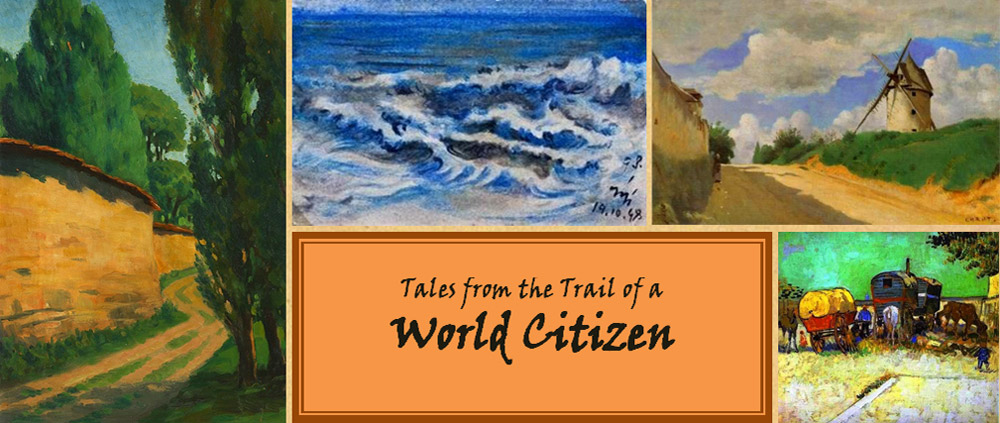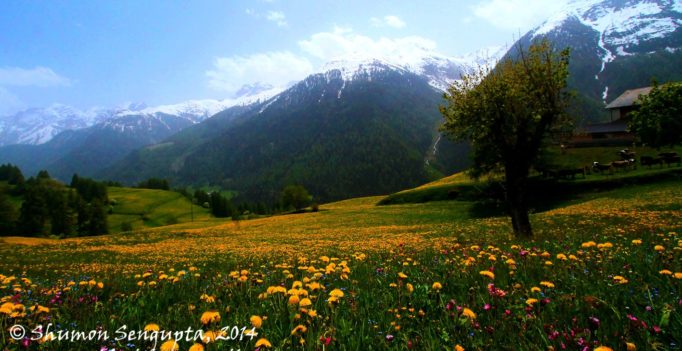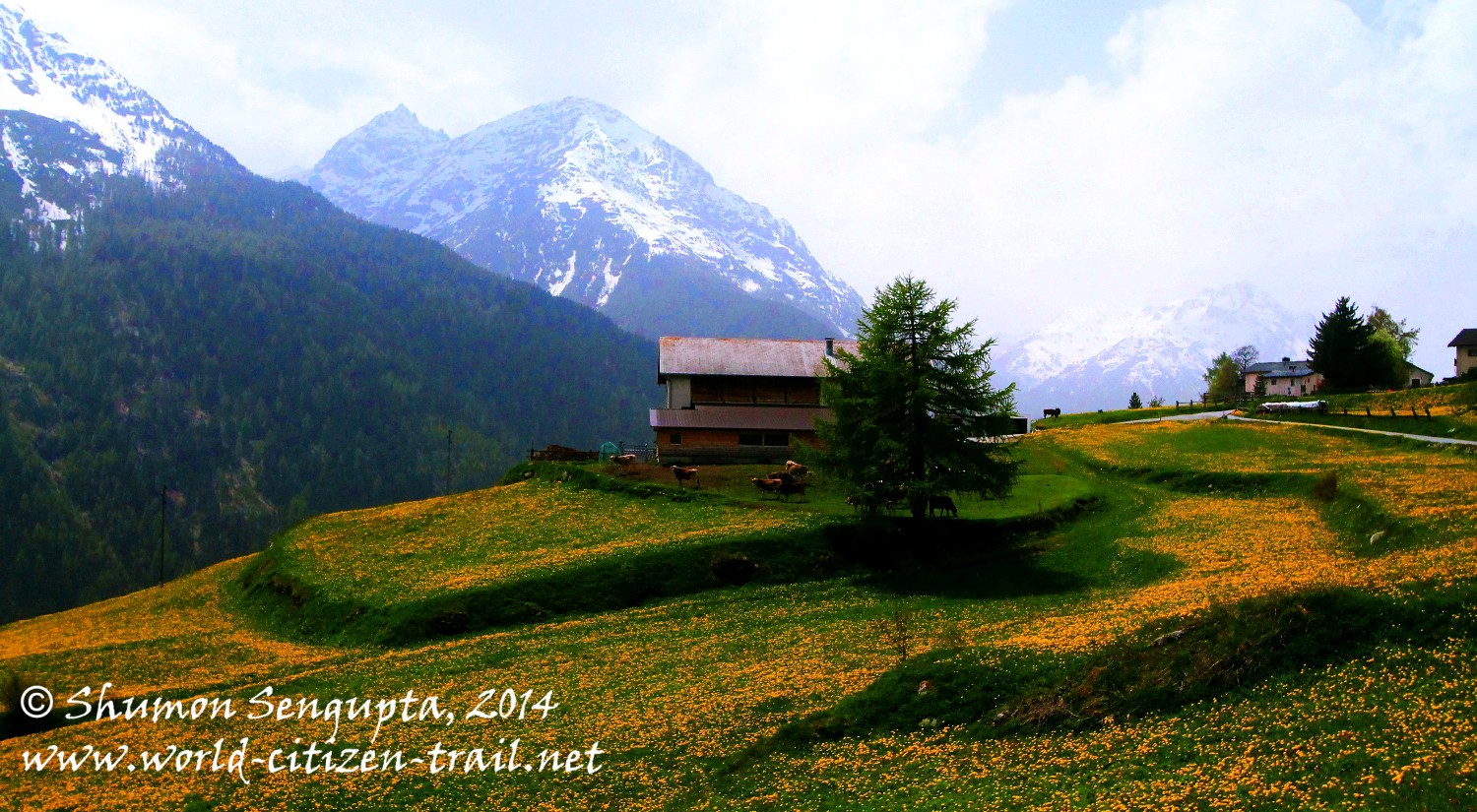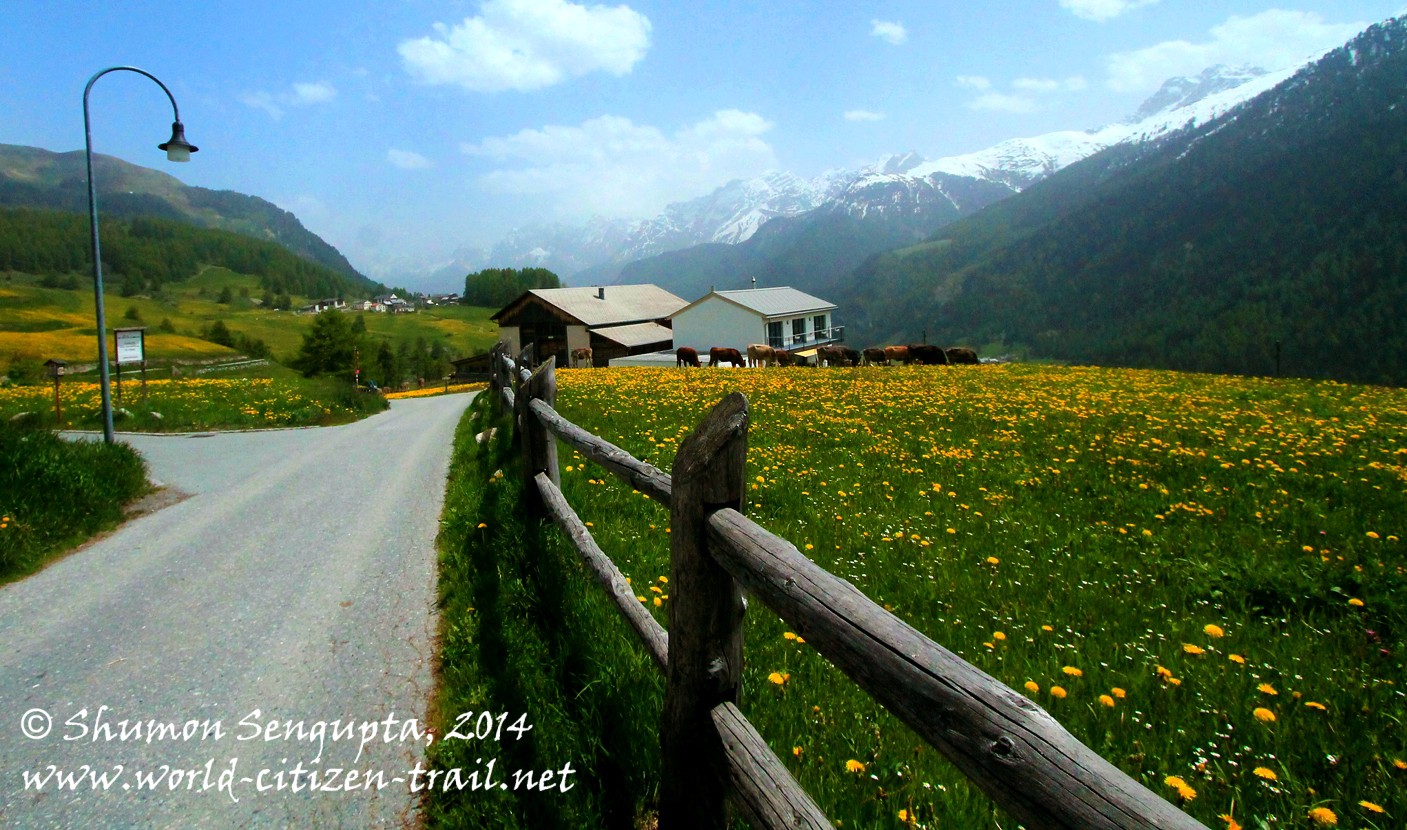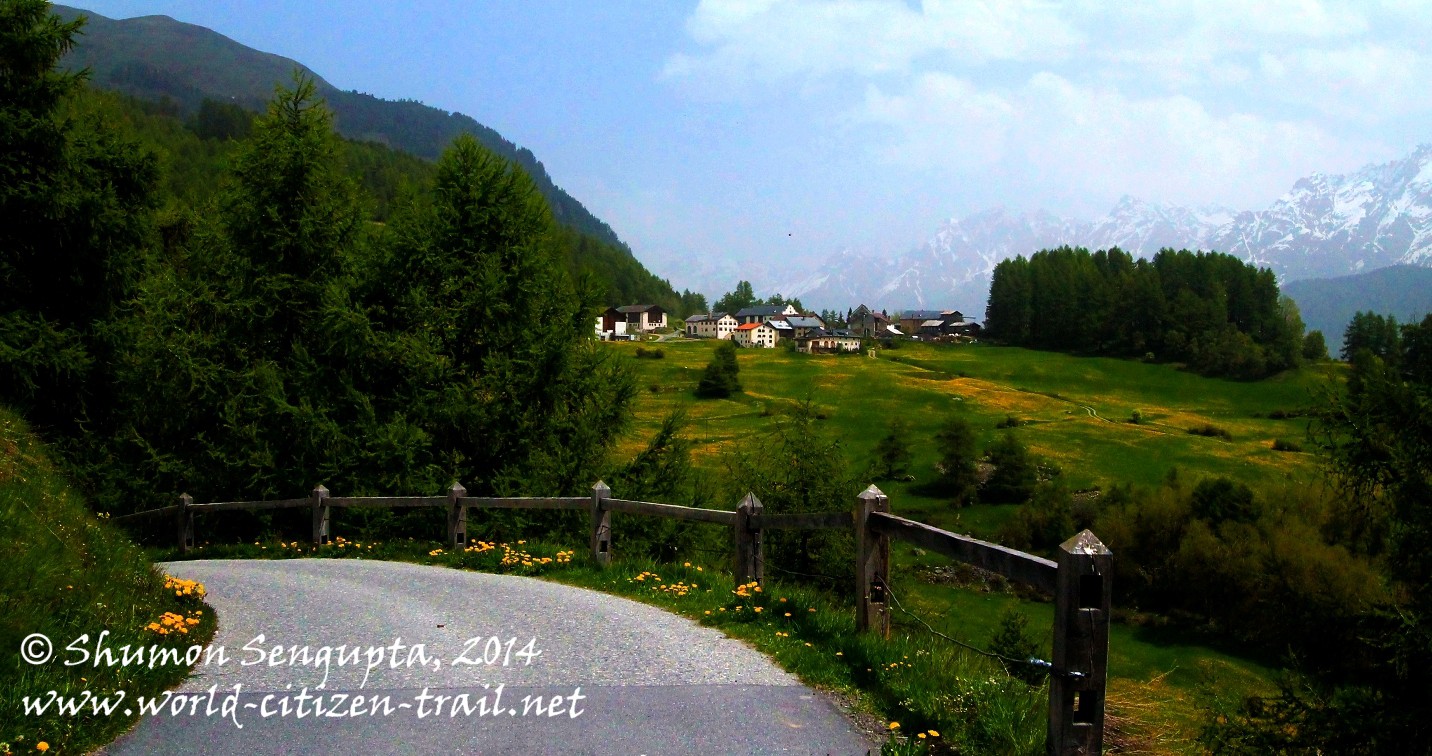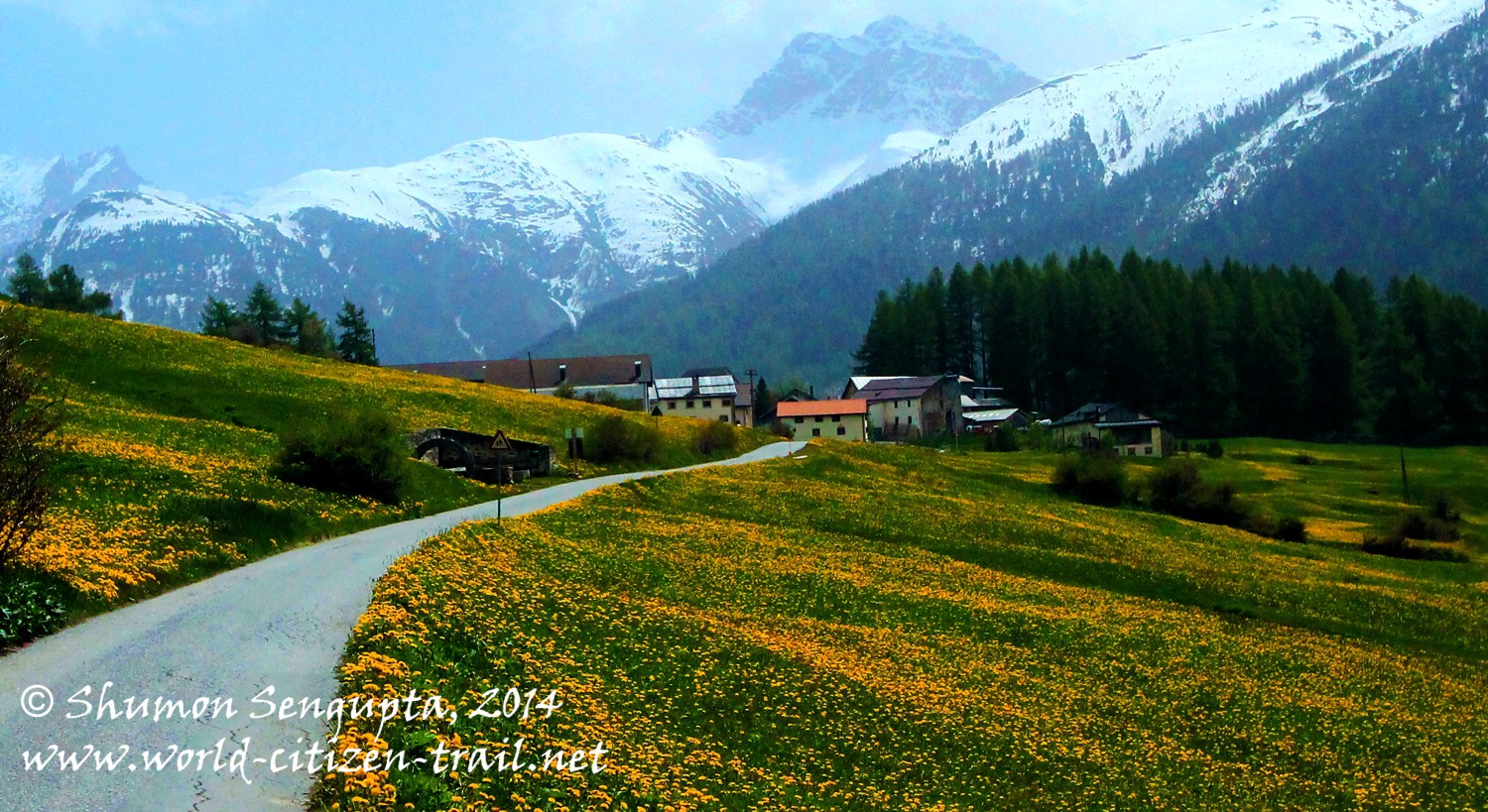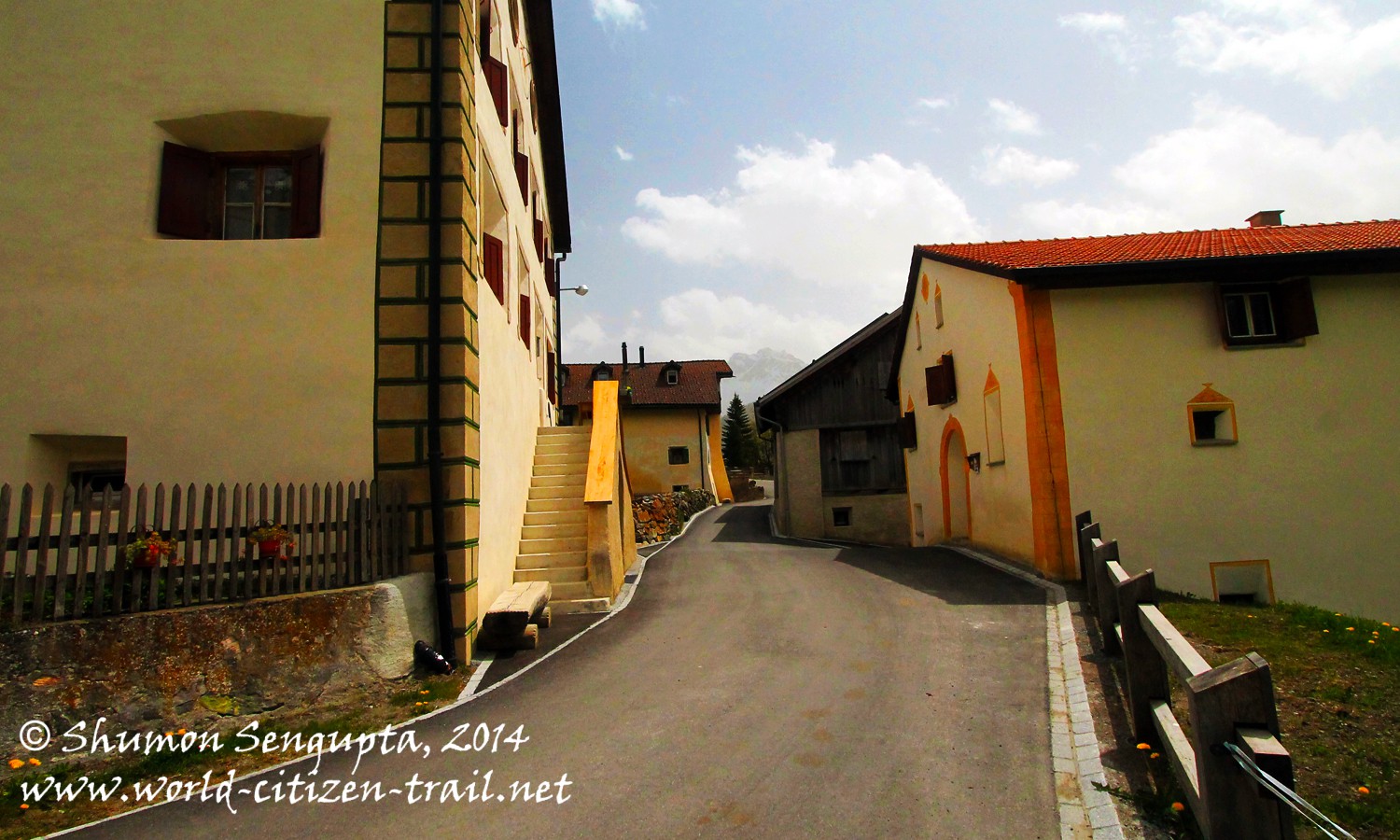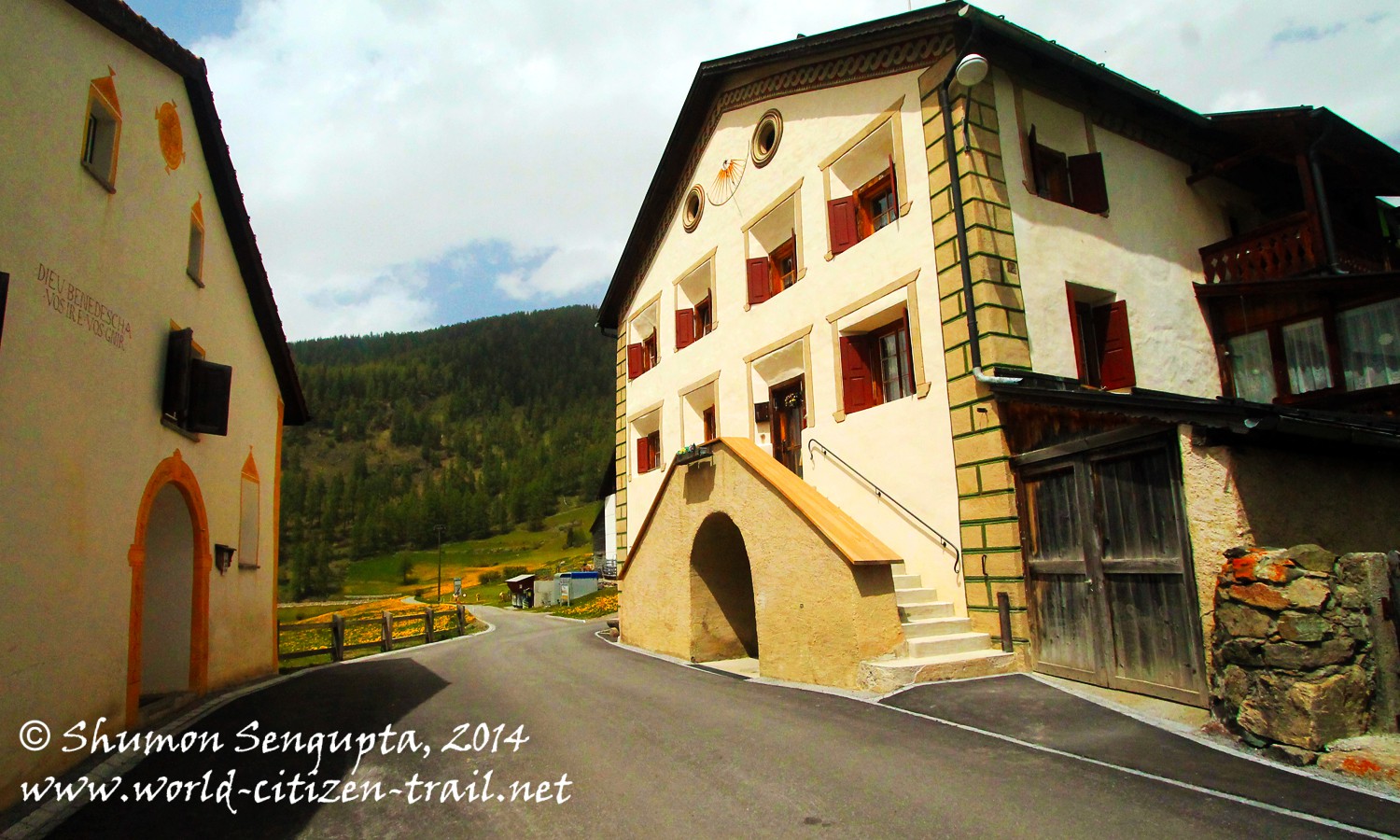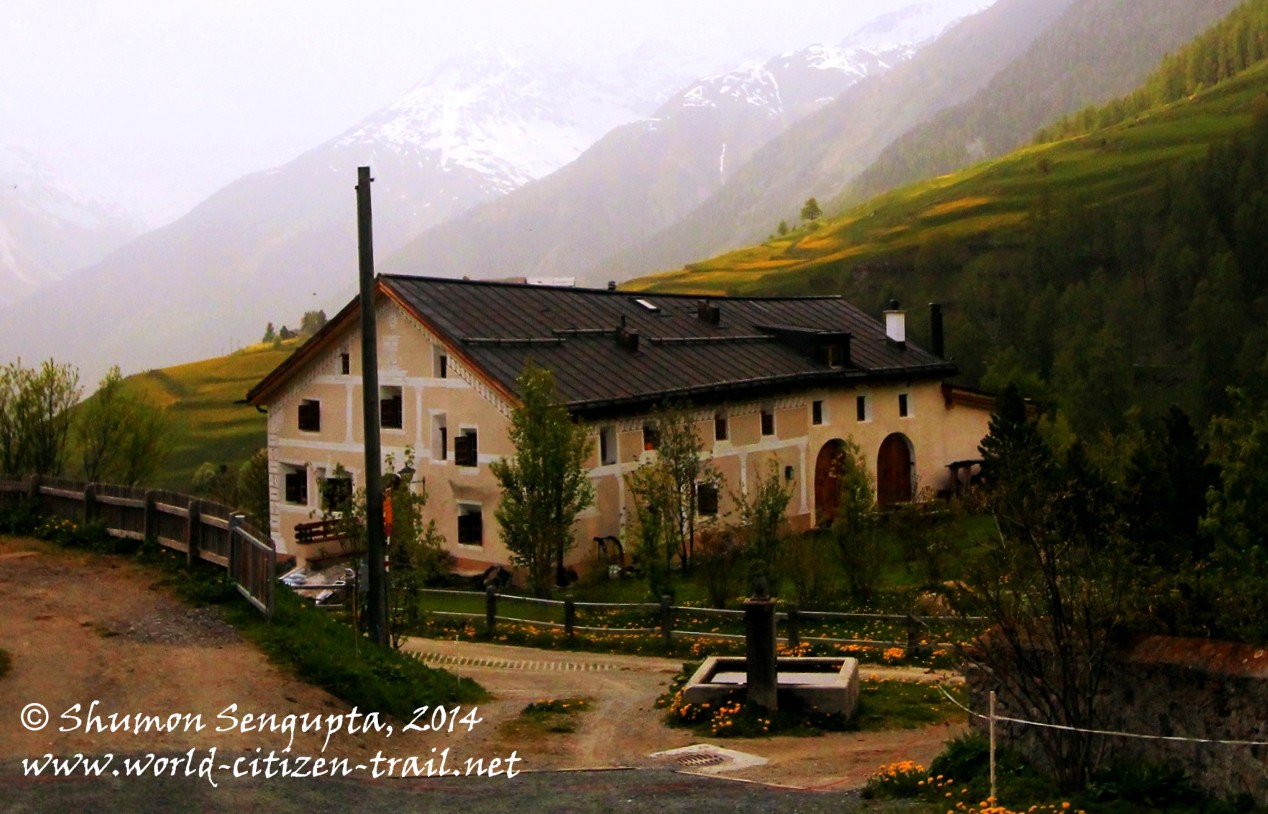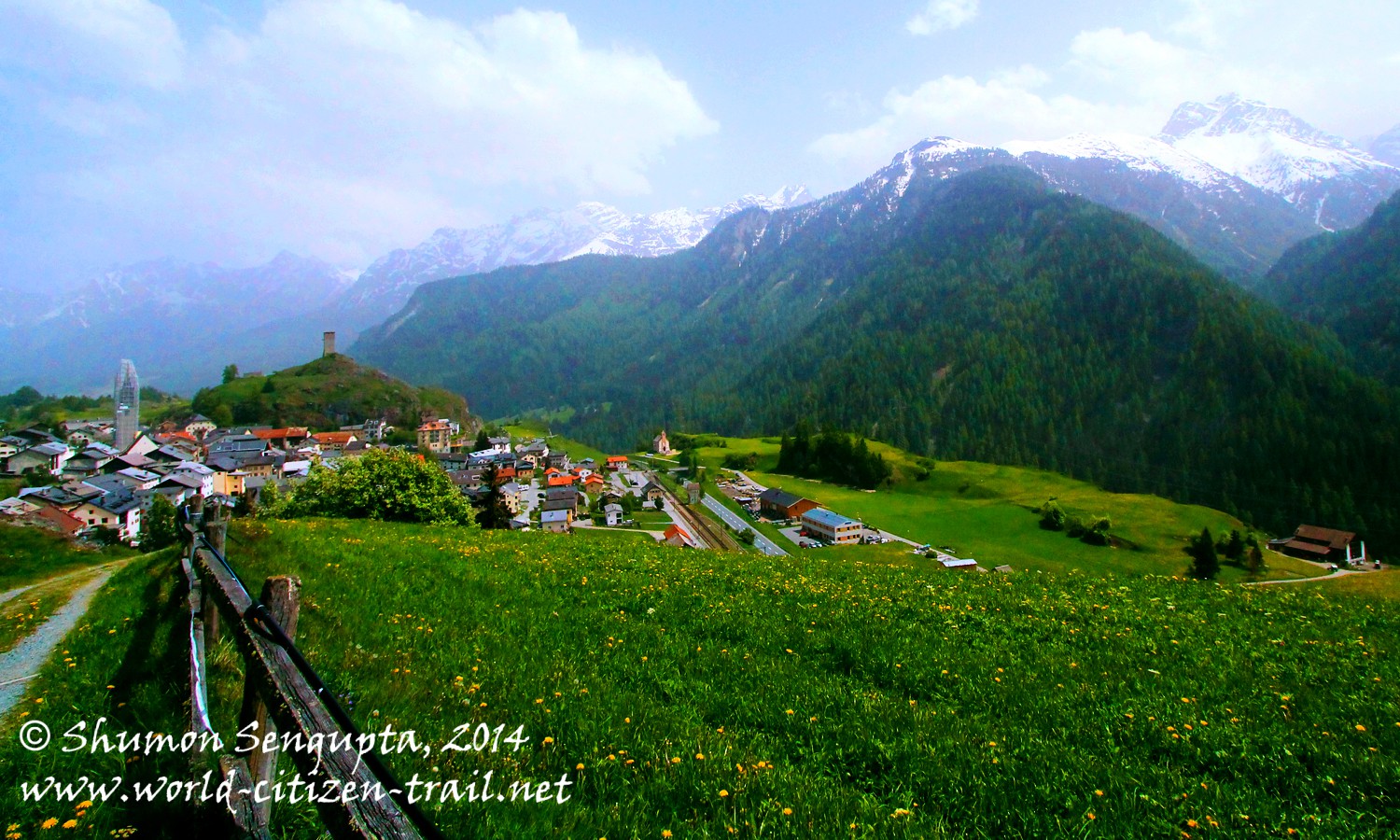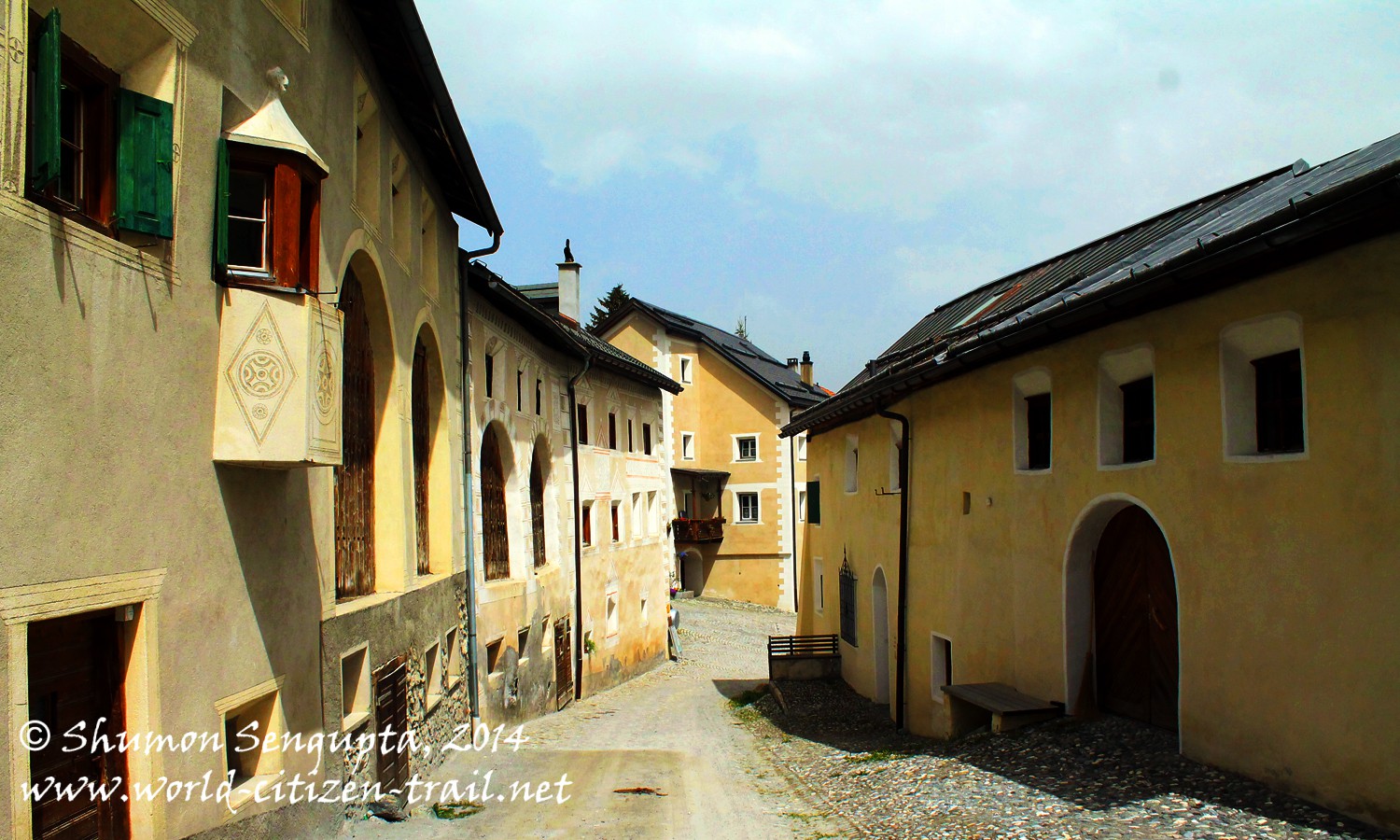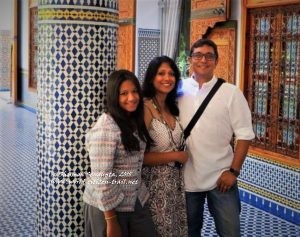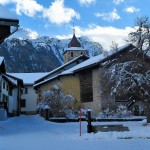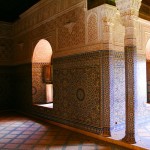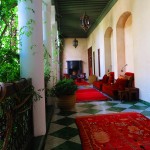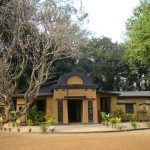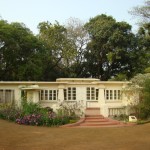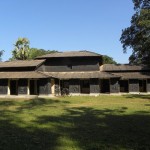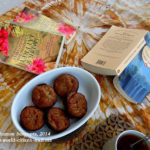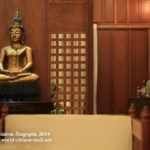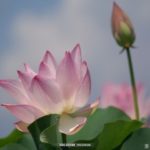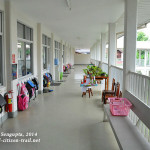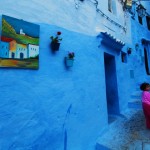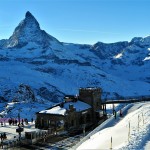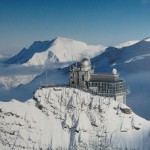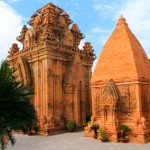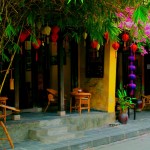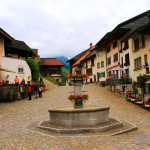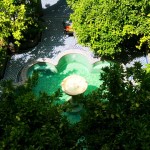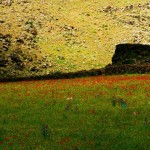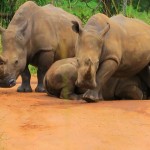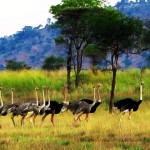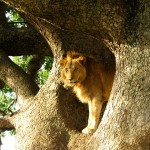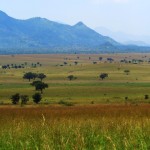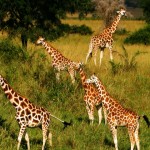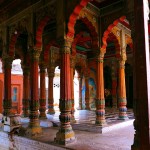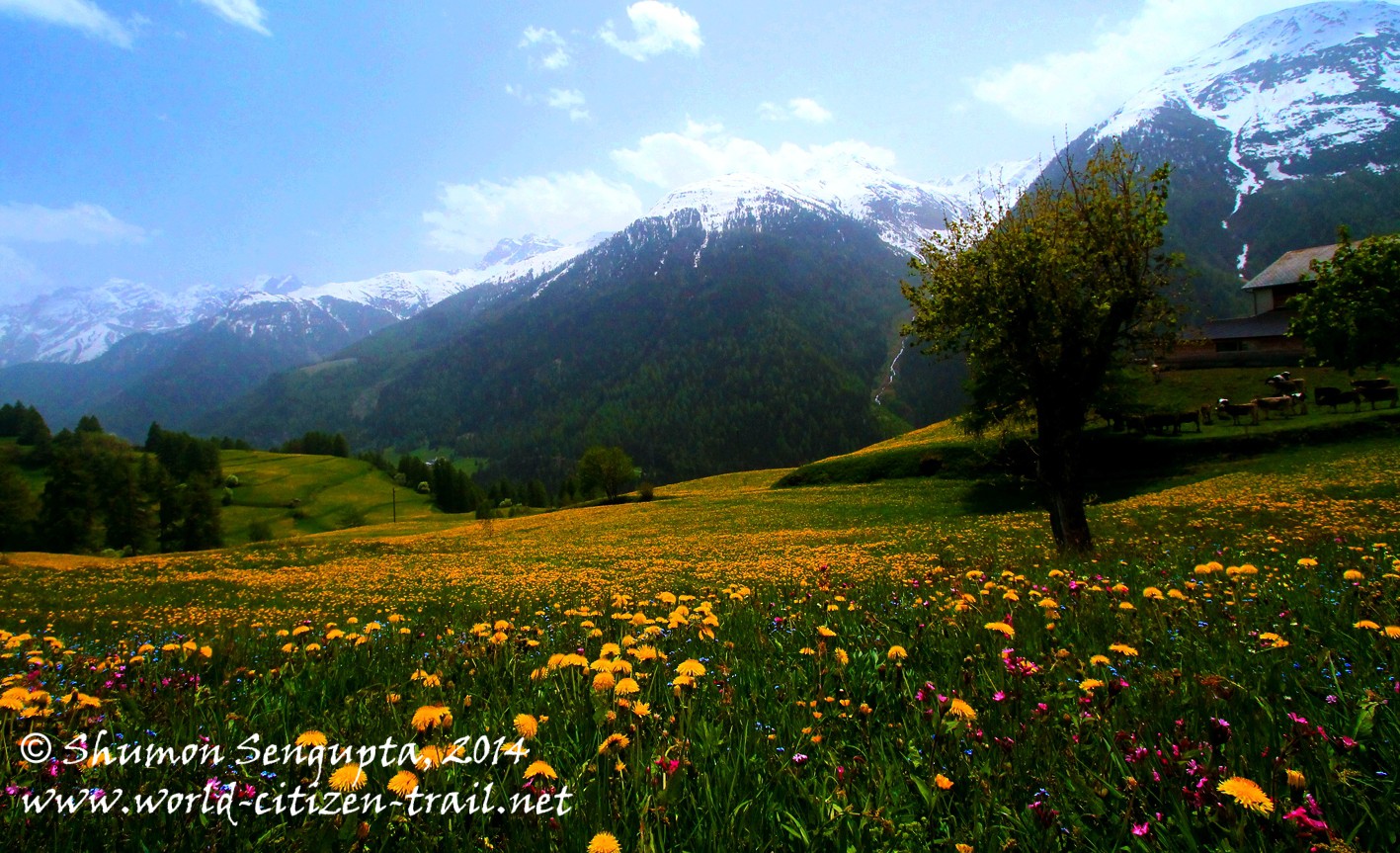
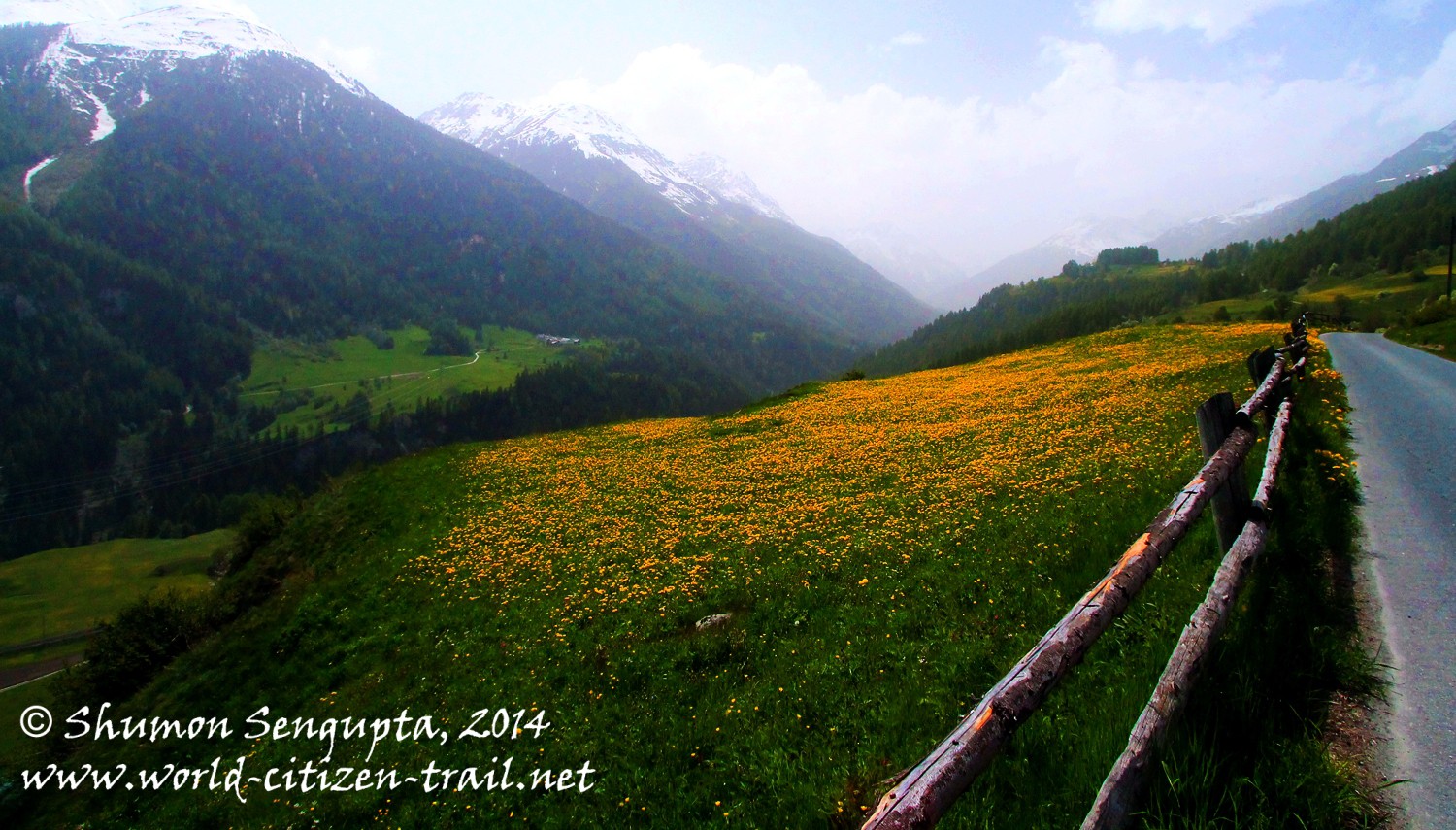 Situated on the southern side of the Swiss Alps in the far Eastern corner of Switzerland, the Lower Engadine is a stunningly beautiful region, far away from the busy tourist circuits. It is one of the few well kept secrets of Switzerland, if there are any left.
Situated on the southern side of the Swiss Alps in the far Eastern corner of Switzerland, the Lower Engadine is a stunningly beautiful region, far away from the busy tourist circuits. It is one of the few well kept secrets of Switzerland, if there are any left.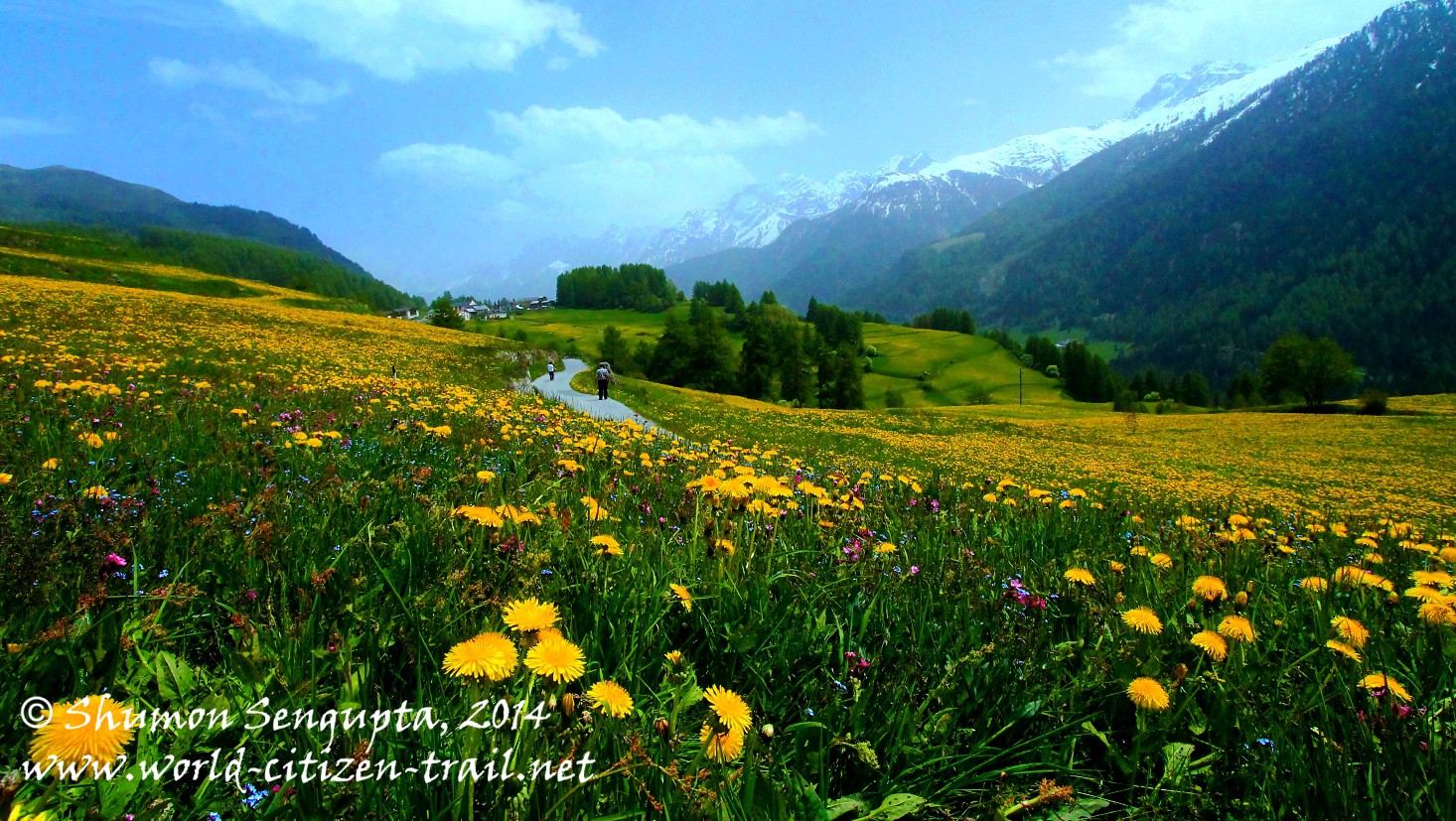
Before anything else, let me tell you briefly about the people of this place and their unique language.
Along with French, German and Italian, Romansch is an official language of Switzerland and Graubunden in Lower Engadine is the heart of the Romansch speaking area. Romansch is a Latin-based language that was said to have been brought to the mountains of this region more than 2,000 years ago by the ancient Rhaetians, a tribe that was pushed out of Italy by the Celts thousands of years back. This unique language has survived only in the remote Swiss valleys of Engadine and today barely 40,000 people in the Graubunden use Romansch, alongside German. And even such a small language group is divided into five distinct dialects.
While these little Romansch speaking communities continue to hold on to some of their ancient traditions and cultural practices (mentioned in my posts on Guarda and Ardez), the gradual breakdown of this old culture has been unfortunately inevitable, given that traditional lifestyles and occupations are changing from farming to tourism. Barely a handful of families practice farming and animal husbandry in the villages of Guarda or Ardez these days.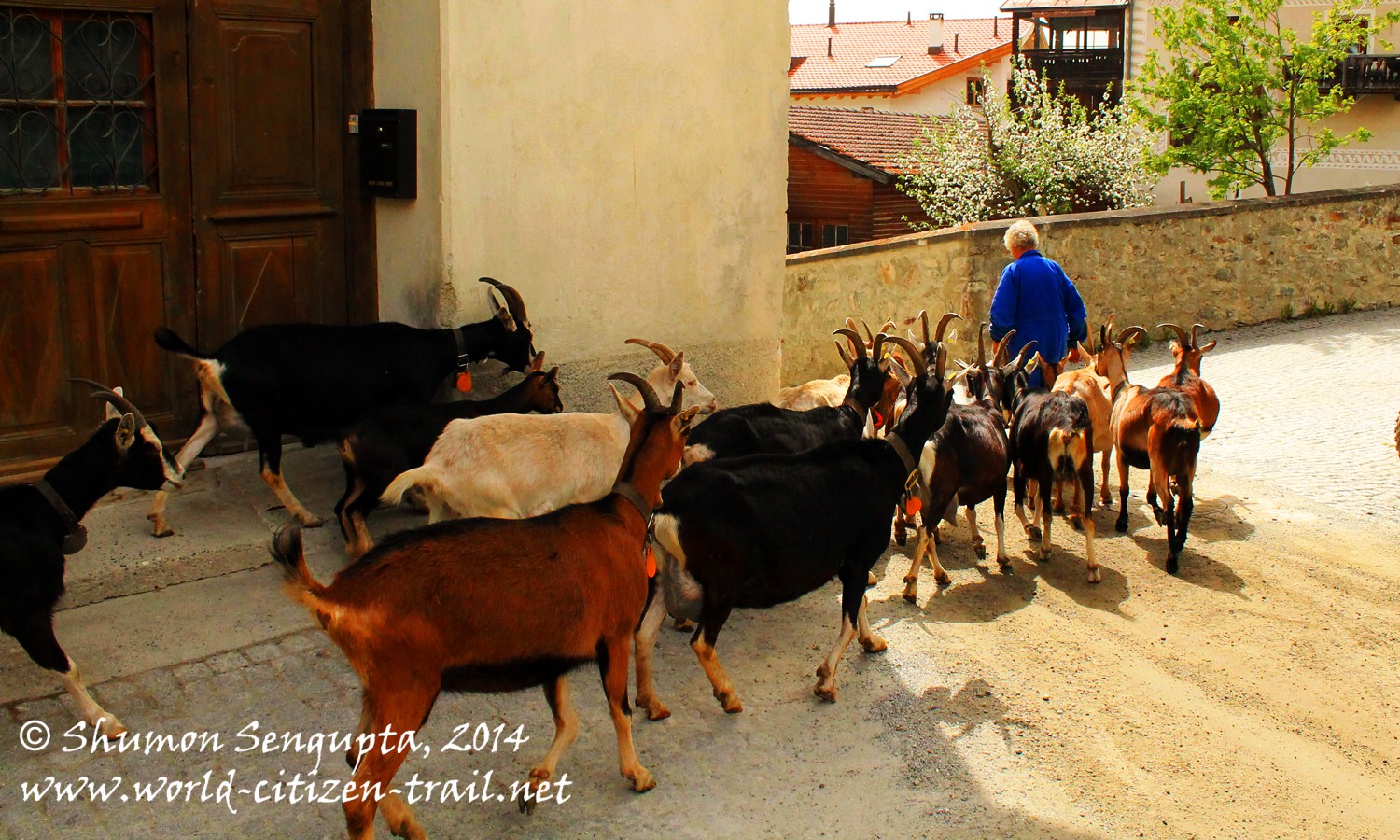
Understandably and regrettably so, this Lower Engadine’s language has suffered given the very small number of people speaking this language and the creeping influence of German, the language spoken by the majority in this region. In recent years the Swiss government has made efforts to encourage the use of Romansch in schools and a new dialect was created that combined the five existing dialects. But many feel that the use of Romansch tongue is in a steady and sure state of decline.
Nevertheless, you can still hear the Romanshc language spoken in the area and catch glimpses of a very old culture and tradition, when you visit this place.
So much about the people and their language; now about the place…
This vast, remote and sparsely populated region is also known for its excellent weather, with a good number of sunny days in a year. The valley is sheltered by two mighty mountain chains: the Silvretta group to the North and the Engadine Dolomites to the south.The high mountains and peaks that fringe the deep cut valleys serve to keep at bay some of the bad weather systems and conditions. The Inn River flows along the Engadine valley and compared to the Upper Engadine, in the Lower Engadine it becomes wider and wilder. Here it flows in abandon, though gorges and rock masses and over flatter landscapes of the valley floor, gushing, gurgling and foaming under quaint old stone bridges in little towns and villages.
Endowed with such spectacular alpine settings, the Lower Engadine is understandably a hiker’s paradise. It is crisscrossed with many walking and hiking trails, with varying levels of difficulties, to suit every kind of traveler. These hikes can be easy and leisurely undertakings, walking from village to village over the meandering hill roads, by the terraced hillsides, through meadows with grazing cows or even through forests of evergreen Pine and Fir or the deciduous Larch. On the other hand many hikes involve steep and strenuous uphill climbs, meant only for the fittest and most avid hikers. Needless to say, it is also the cross-country and mountain cyclist’s paradise.
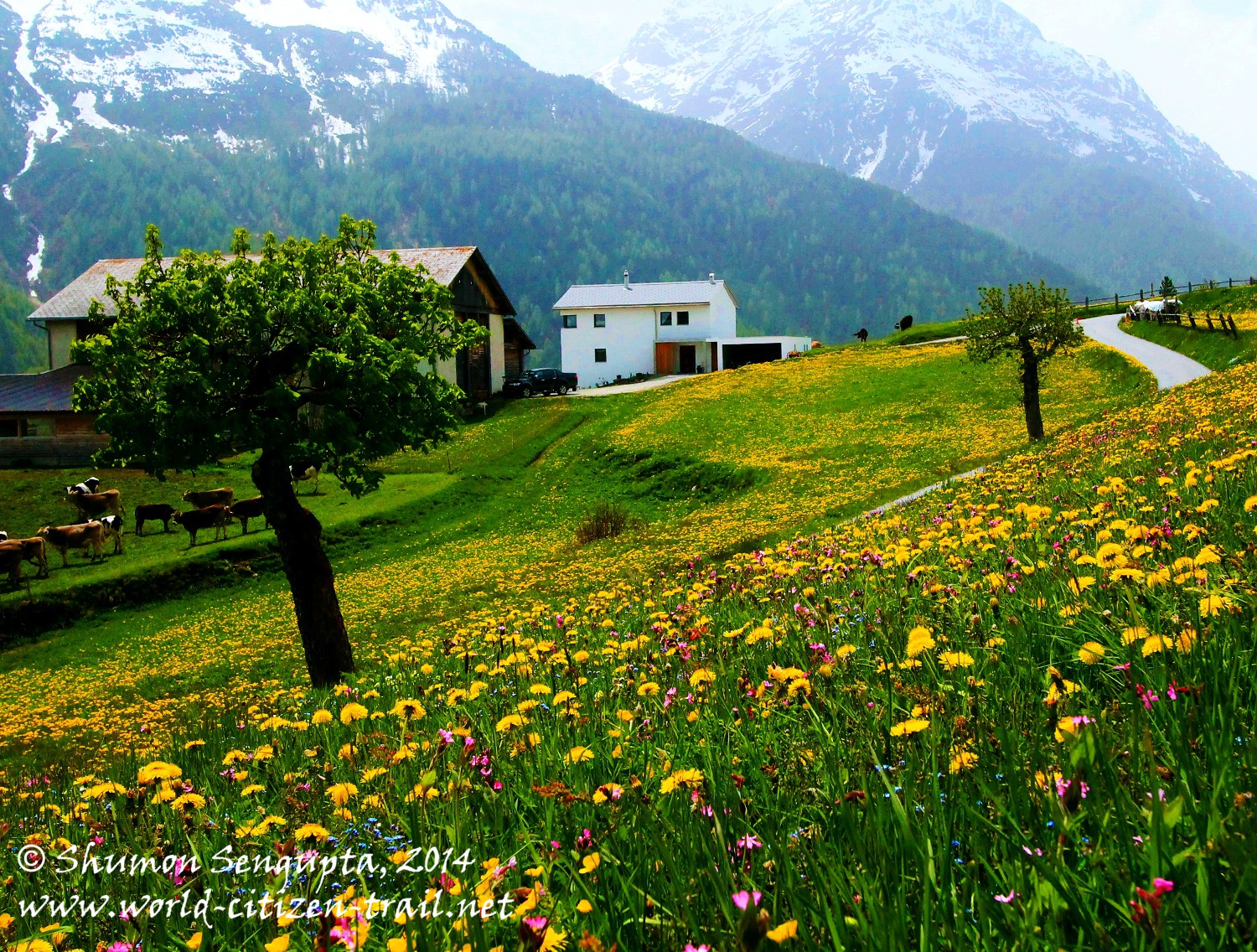
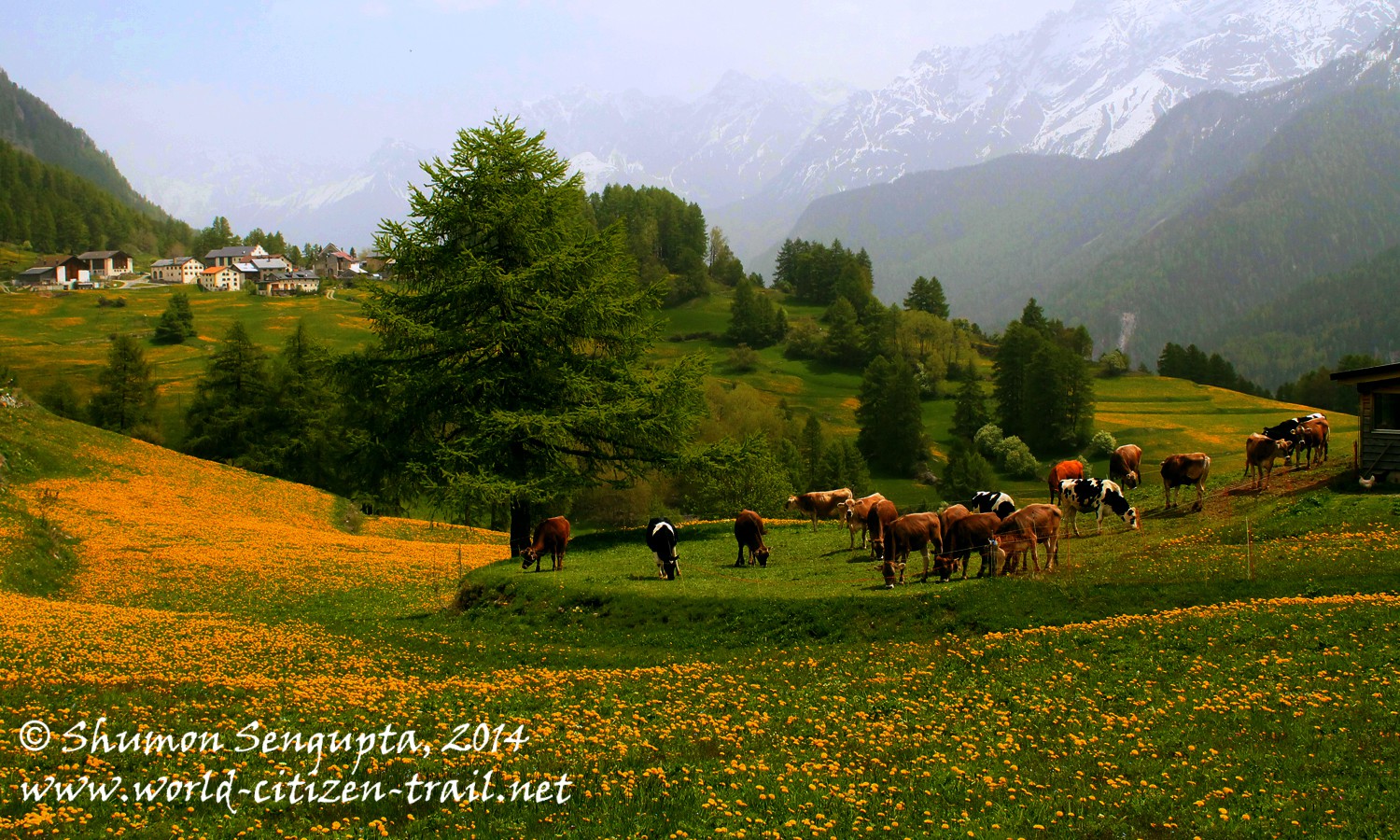 And many of these hiking trails pass through numerous small quaint villages and hamlets where spectacular vistas and the grandeur of un-spoilt nature compete with old world architecture seemingly frozen in time. There is a particularly important heritage trail that leads from Zernez via Susch, Lavin, Guarda, Ardez towards Scuol and Martina, passing many significant historic sites on the way. Lavin is also the base for hiking in the spectacular Swiss National Park, Switzerland’s largest nature reserve which has a pristine landscape and animal world (Golden Eagle, Marmot, Chamois, Elk etc), making it into a unique hiking and wildlife-watching region.
And many of these hiking trails pass through numerous small quaint villages and hamlets where spectacular vistas and the grandeur of un-spoilt nature compete with old world architecture seemingly frozen in time. There is a particularly important heritage trail that leads from Zernez via Susch, Lavin, Guarda, Ardez towards Scuol and Martina, passing many significant historic sites on the way. Lavin is also the base for hiking in the spectacular Swiss National Park, Switzerland’s largest nature reserve which has a pristine landscape and animal world (Golden Eagle, Marmot, Chamois, Elk etc), making it into a unique hiking and wildlife-watching region.
The excellent and super efficient Swiss transportation system (railway, post buses, cable cars etc) operates through the valley, providing easy access to hundreds of walking, hiking, trekking and cycling trails.
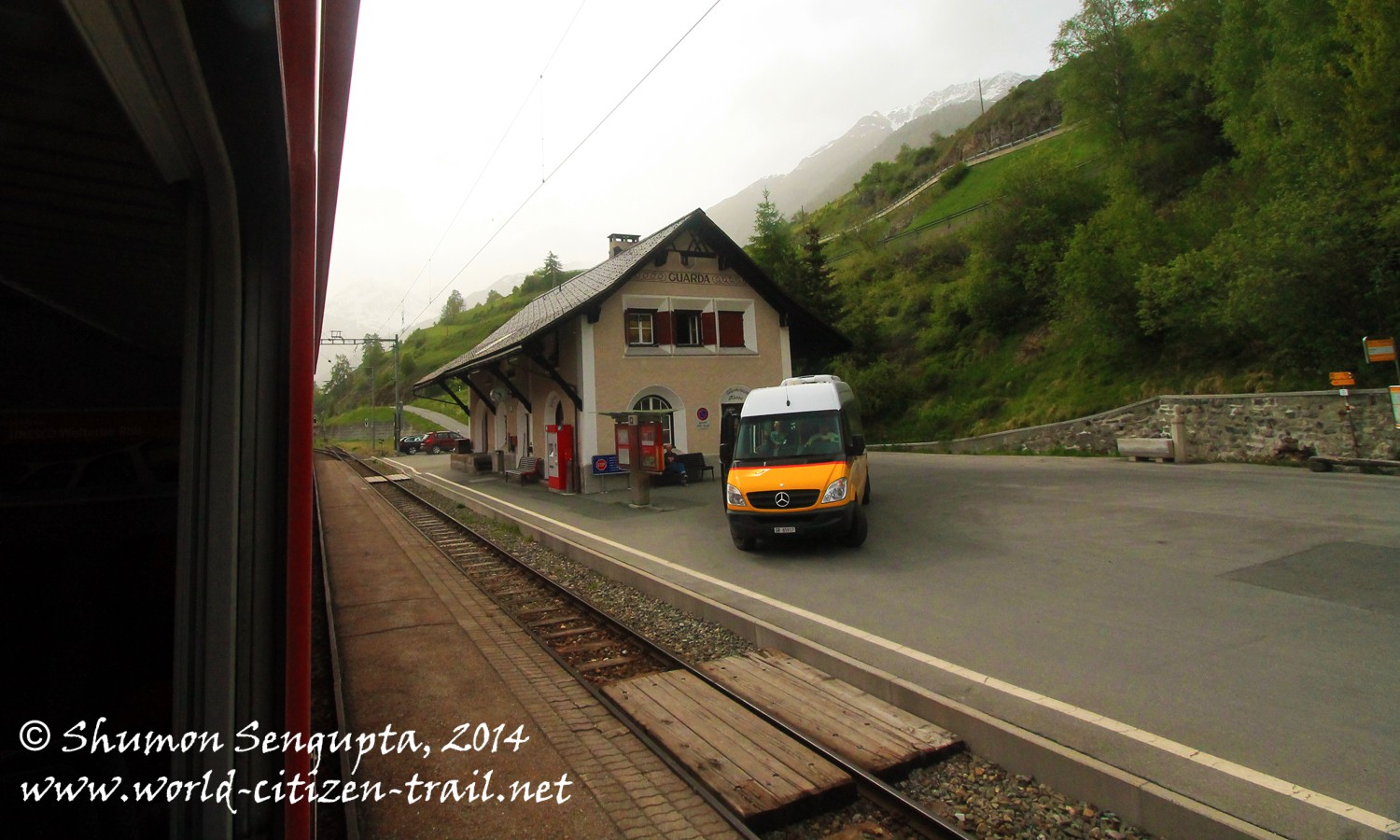
 In fact at many railway stations we saw hikers and cyclists (single as well as in small groups) depart; the spirit of adventure, excitement and challenge writ large their eyes, voices and gaits. It invariably left me wondering, where they were headed to, what adventures they were to face, what thrills and excitements they were to feel and what unsurpassed beauty they were to behold on their way to their destinations. I couldn’t help envy them and regret the feeling of being left behind.
In fact at many railway stations we saw hikers and cyclists (single as well as in small groups) depart; the spirit of adventure, excitement and challenge writ large their eyes, voices and gaits. It invariably left me wondering, where they were headed to, what adventures they were to face, what thrills and excitements they were to feel and what unsurpassed beauty they were to behold on their way to their destinations. I couldn’t help envy them and regret the feeling of being left behind.
In my previous post, I have written at length on how we reached the village of Guarda from St. Mortz and what we saw there. We were greatly impressed by the old Sgraffiti houses in Guarda, with their sweeping arch shaped doors, deeply set windows and exquisite designs either painted in pastel colors or etched into wet plaster and then left to dry. Sagraffiti is a medieval decorative tradition and technique that was brought to this region from neighboring Italy as early as 16th century.
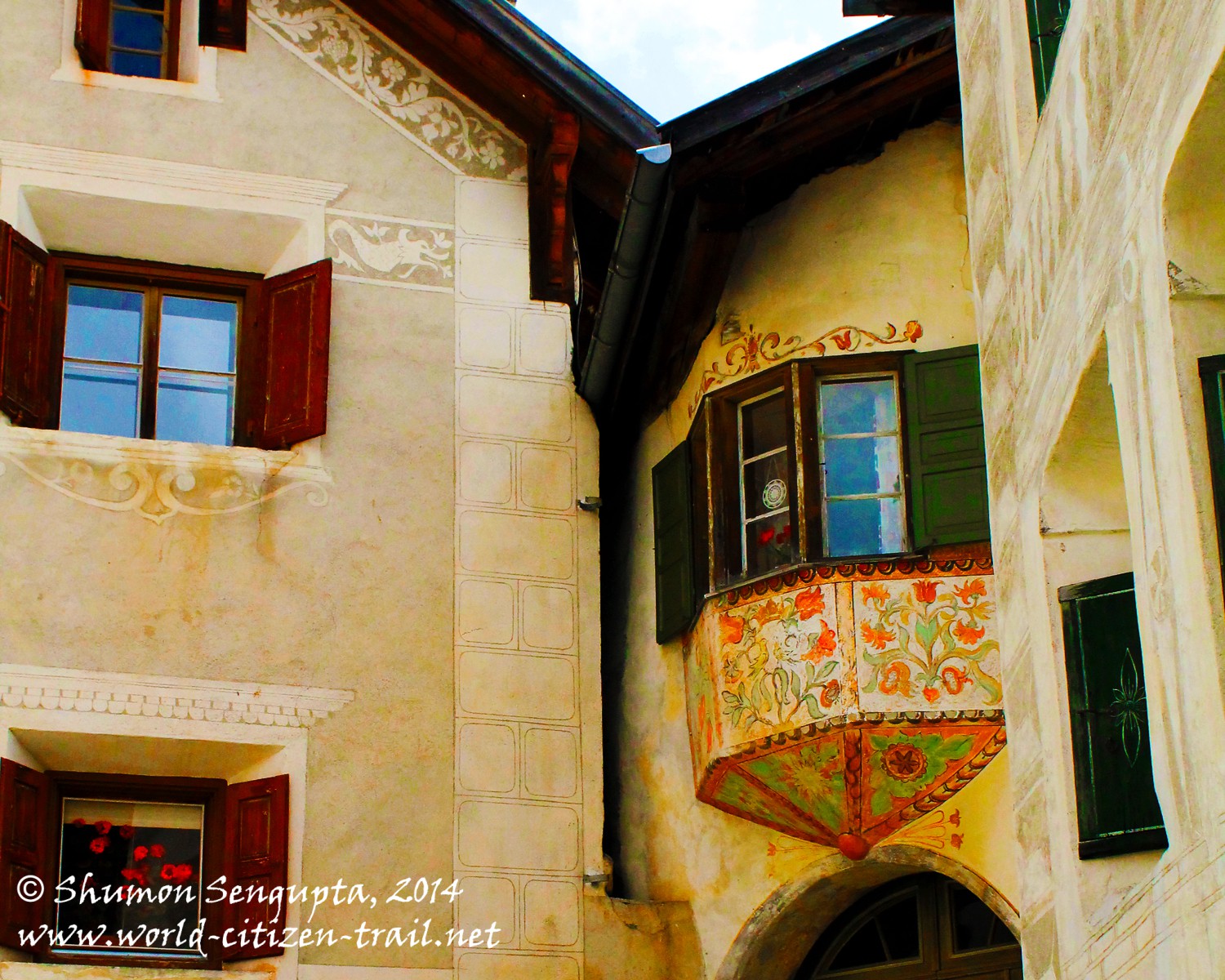
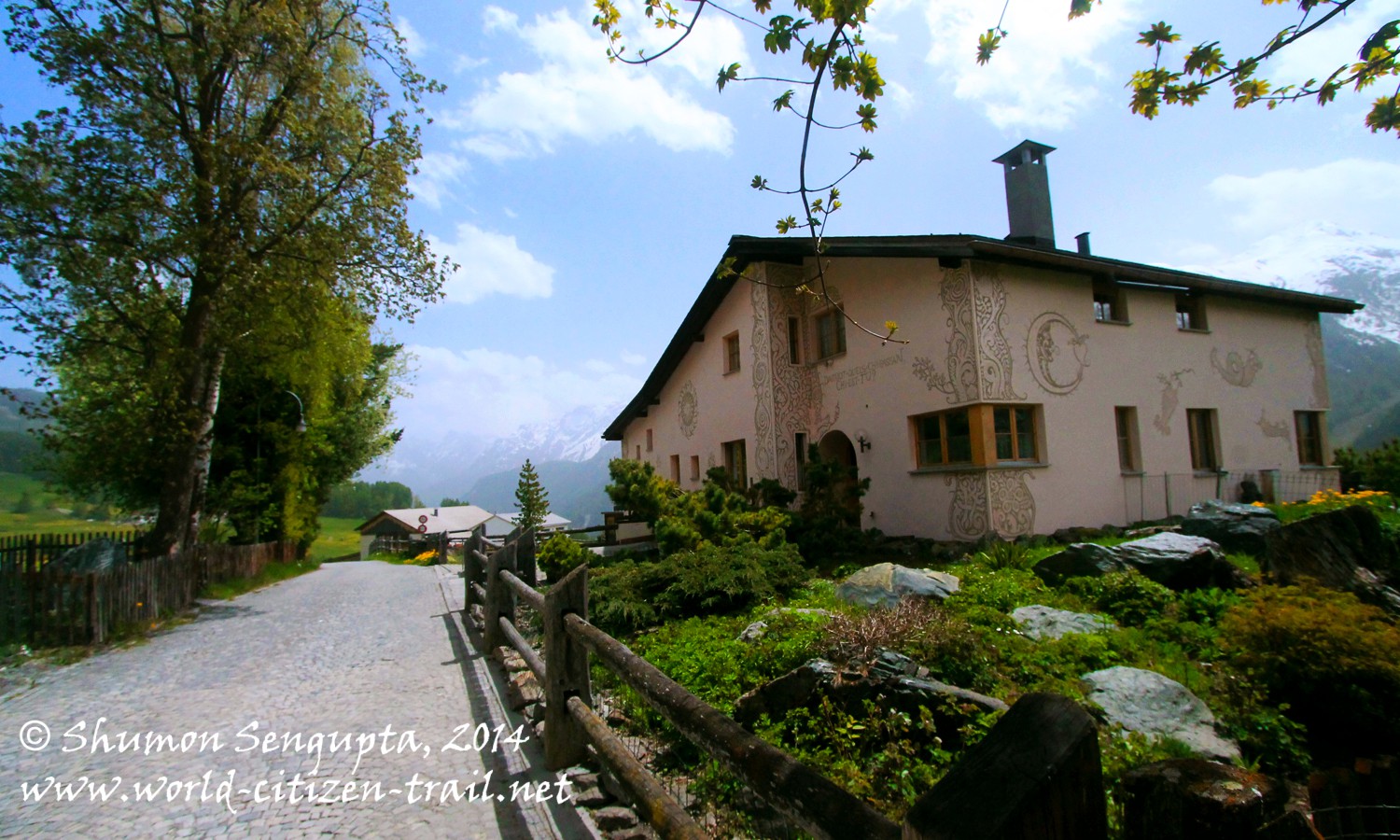 Ardez is another historic Sagraffiti village that lies on the same hillside terrace as Guarda, further to the east, 4.7 kms away. After spending some time wandering through the cobbled lanes and by-lanes of Guarda, we took the mountain road to Ardez.
Ardez is another historic Sagraffiti village that lies on the same hillside terrace as Guarda, further to the east, 4.7 kms away. After spending some time wandering through the cobbled lanes and by-lanes of Guarda, we took the mountain road to Ardez.
We walked past beautiful hamlets, isolated farmhouses, the village of Bos-cha, little streams and springs and lush meadows grazed by cattle. The villages and hamlets seemed forgotten in time; they were incredibly tranquil and beautiful.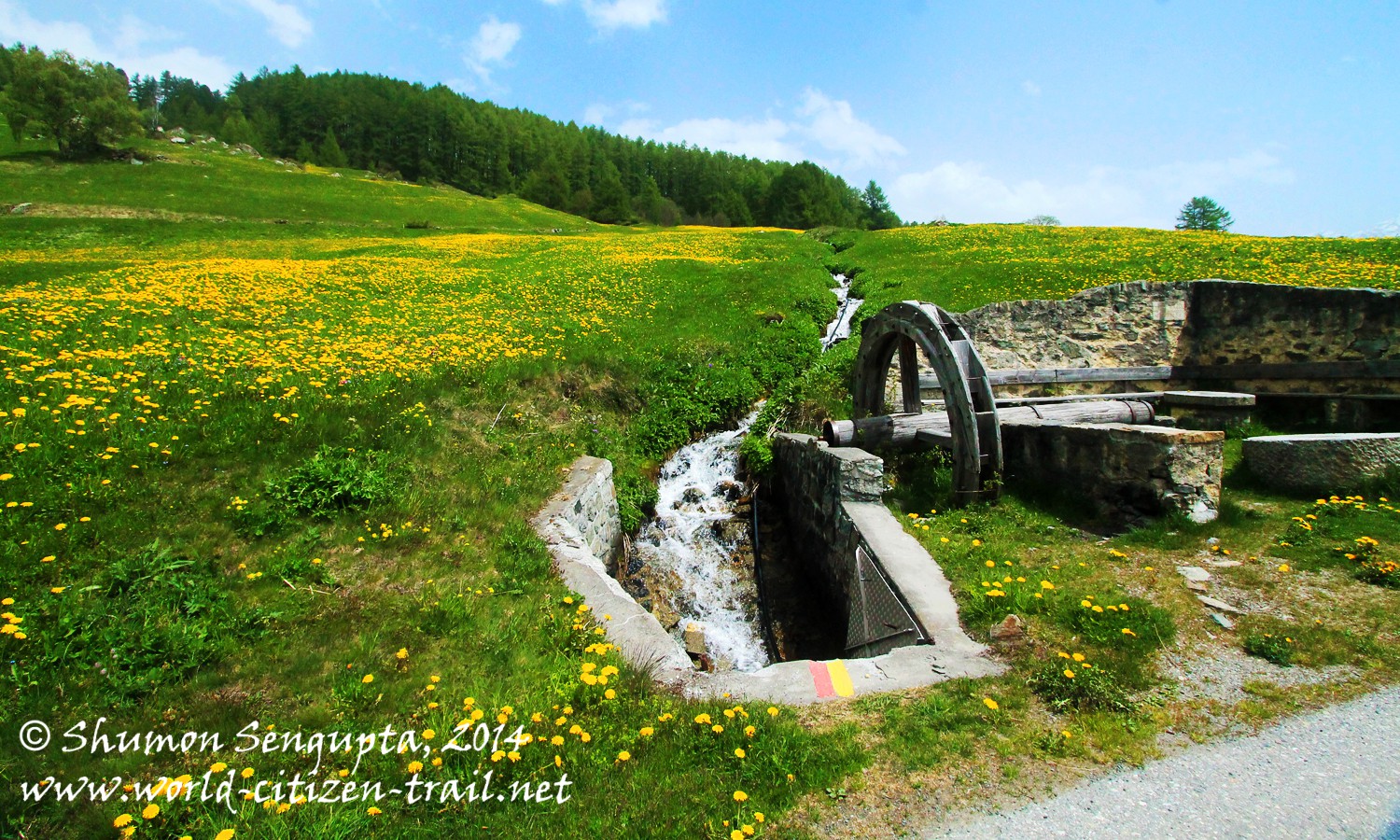 The valley has a wide range of flora because of its special geographical (climatic and mineral) conditions. It was the beginning of summer and the snow had receded, giving way to lush green thickly carpeted meadows that had begun to burst into a profusion of wildflowers. We admired the gentians, primrose, lilies, bell flowers, various kinds of anemones and countless varieties of other wild flowers of different colors, shades and hues.
The valley has a wide range of flora because of its special geographical (climatic and mineral) conditions. It was the beginning of summer and the snow had receded, giving way to lush green thickly carpeted meadows that had begun to burst into a profusion of wildflowers. We admired the gentians, primrose, lilies, bell flowers, various kinds of anemones and countless varieties of other wild flowers of different colors, shades and hues.
The weather was sparkling, with fresh air and brilliant sunshine. The rugged snowcapped mountains high above presented a stark and beautiful contrast to the profusely flowering, thickly carpeted, lush green valley below, as we meandered along the narrow mountain road and descended into Ardez an hour and half later. 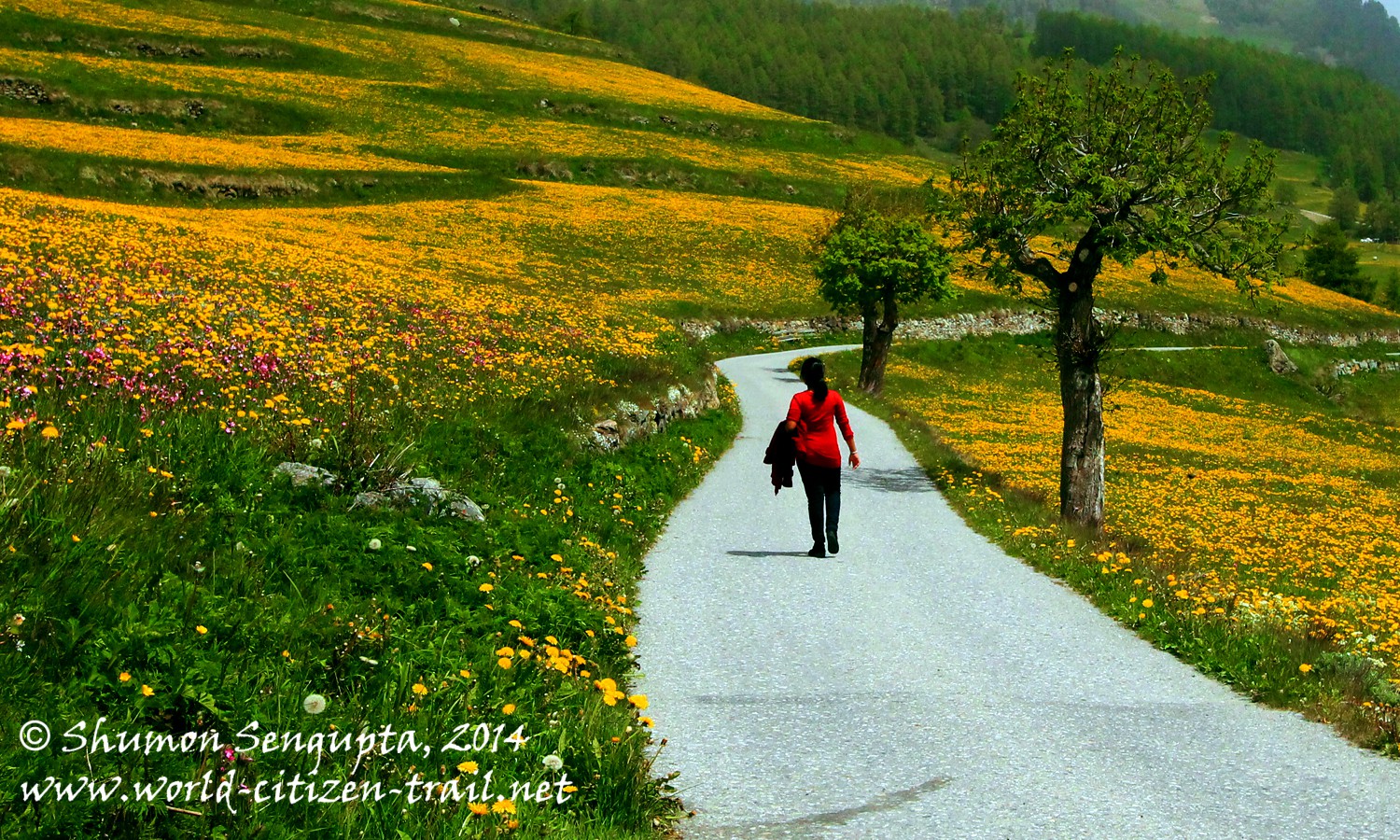
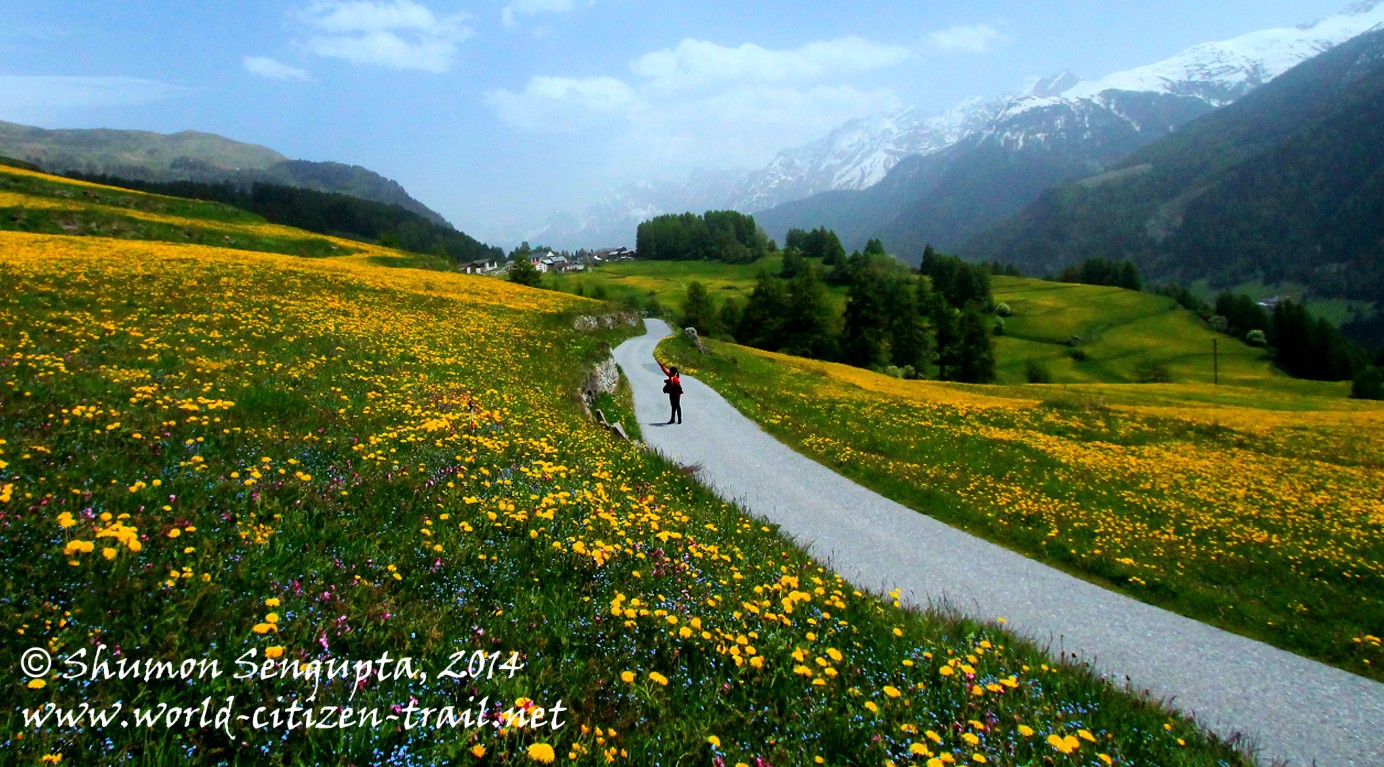

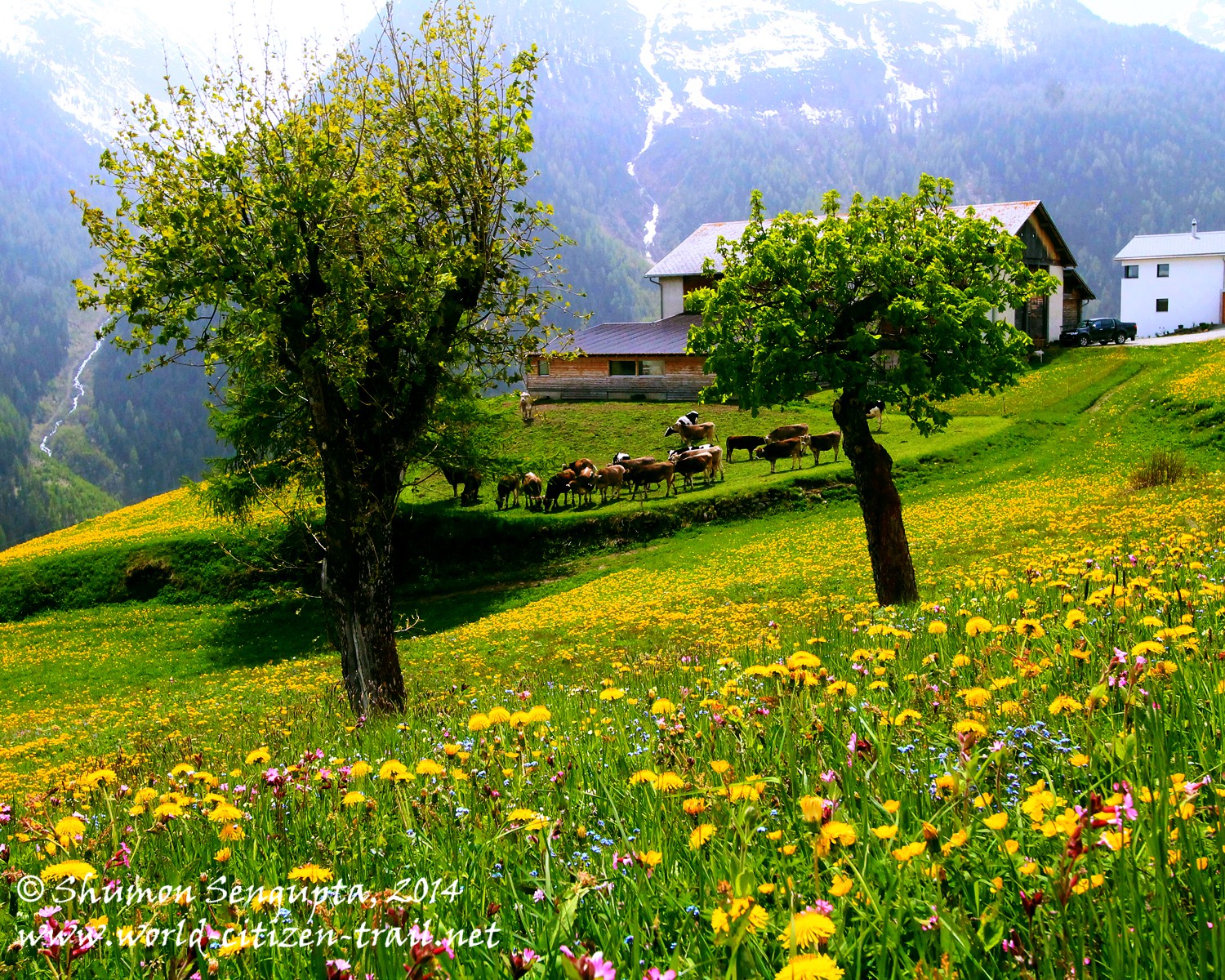

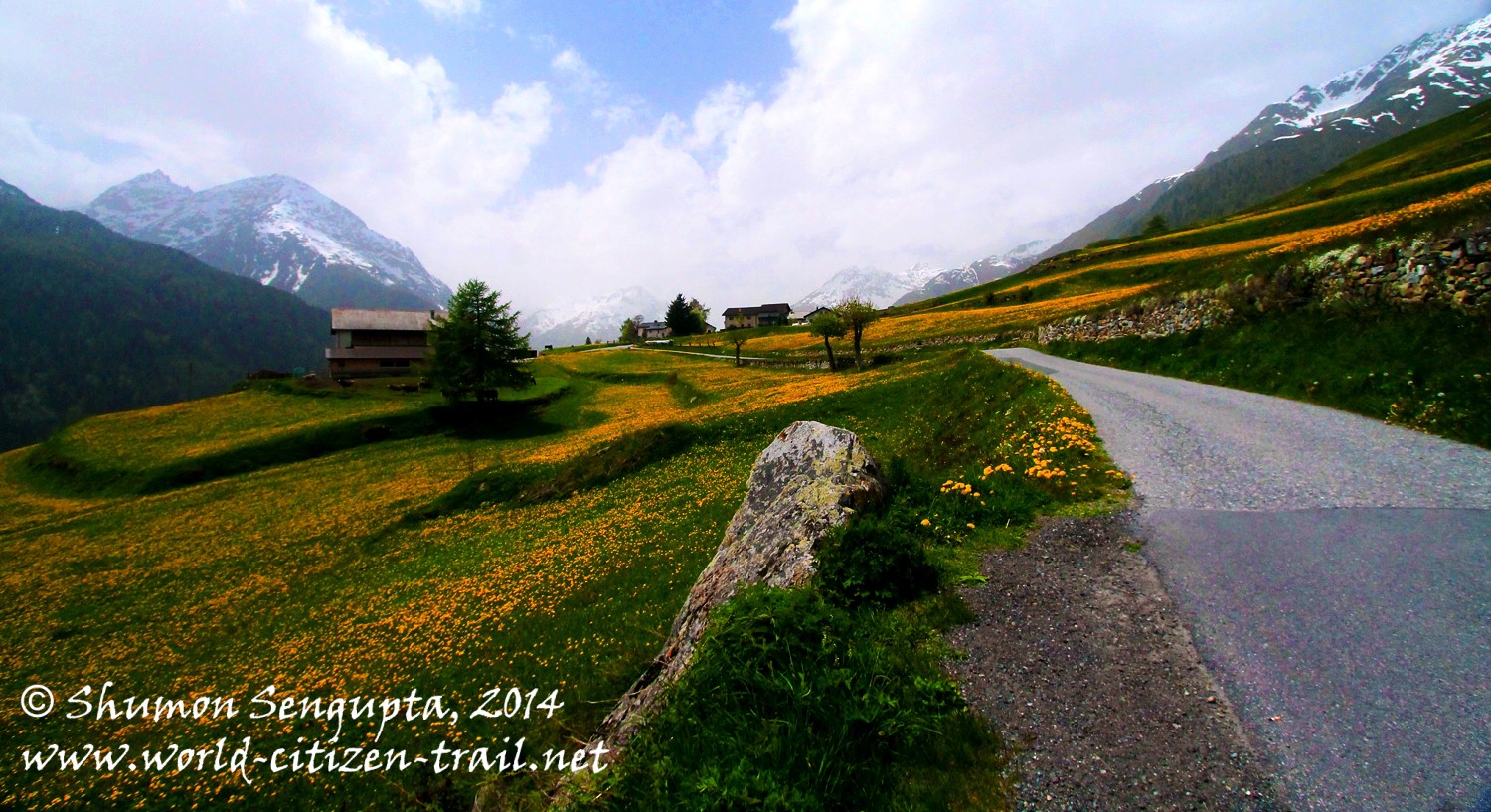
Bos-cha village at a distance ….
Bos-cha village .. hamlet rather ..
I leave you with some more photographs, of the last leg of our descent to Ardez village. I hope these photographs, seen together, will give you at least a fraction of a hint of what we experienced.

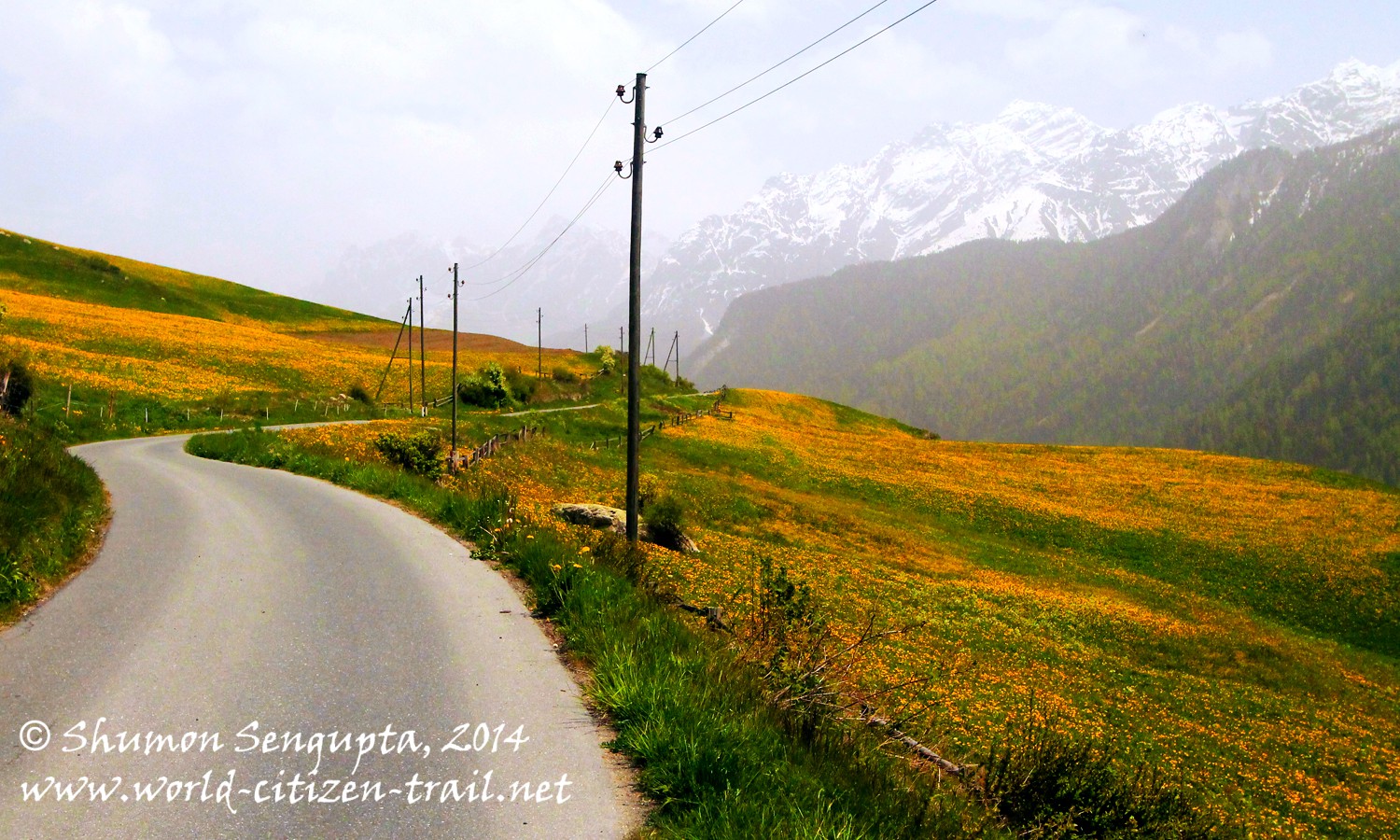
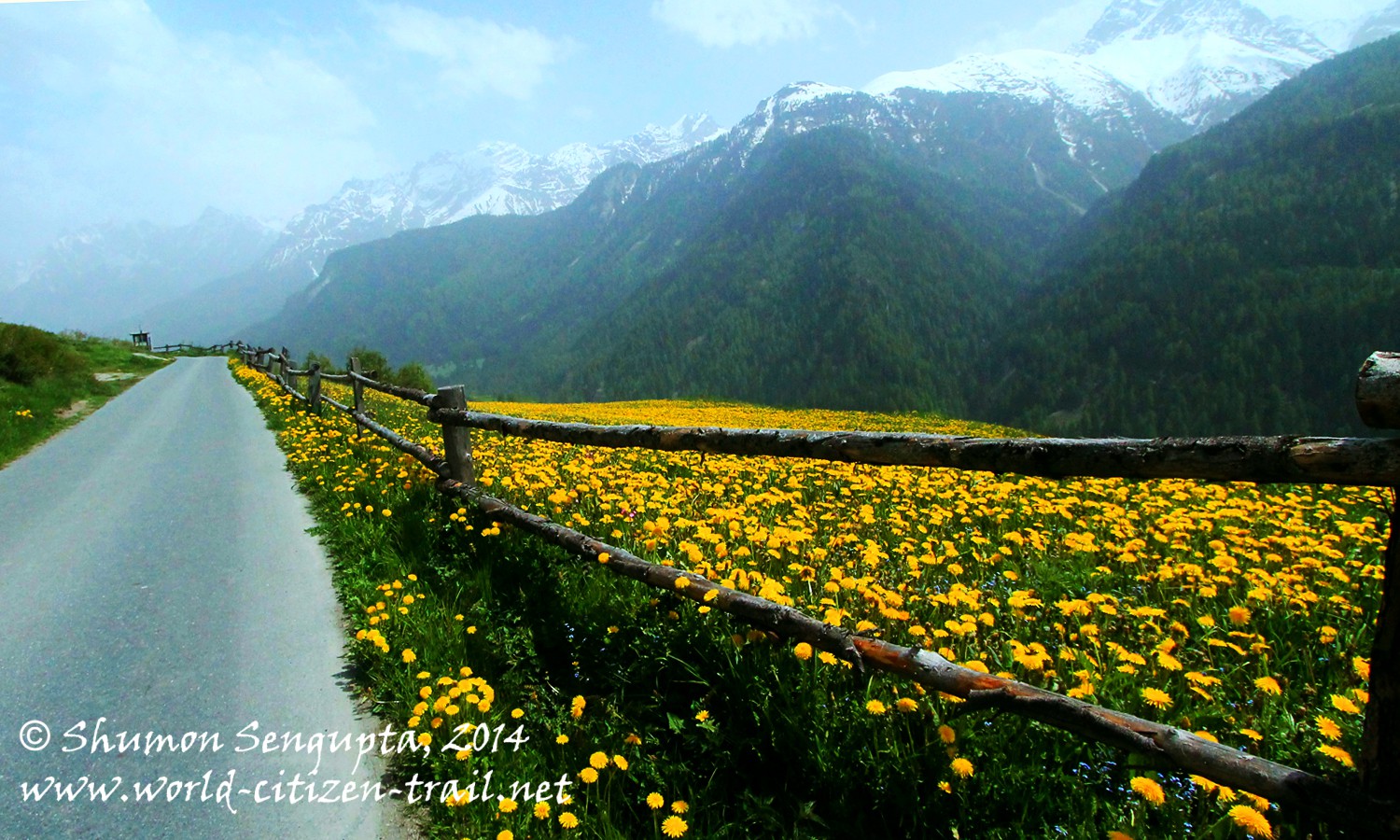
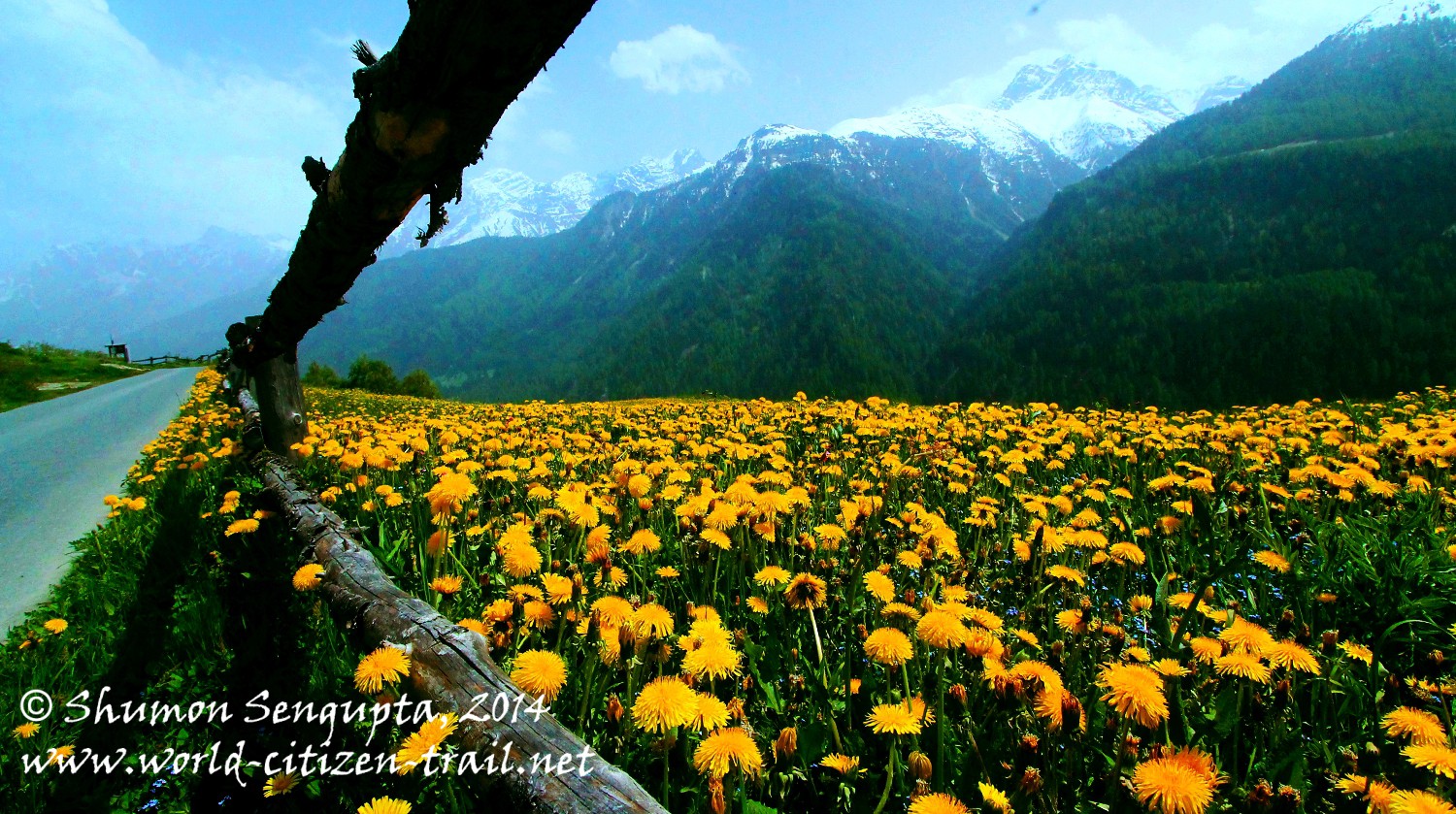

Ardez village at a distance …
Ardez village …
